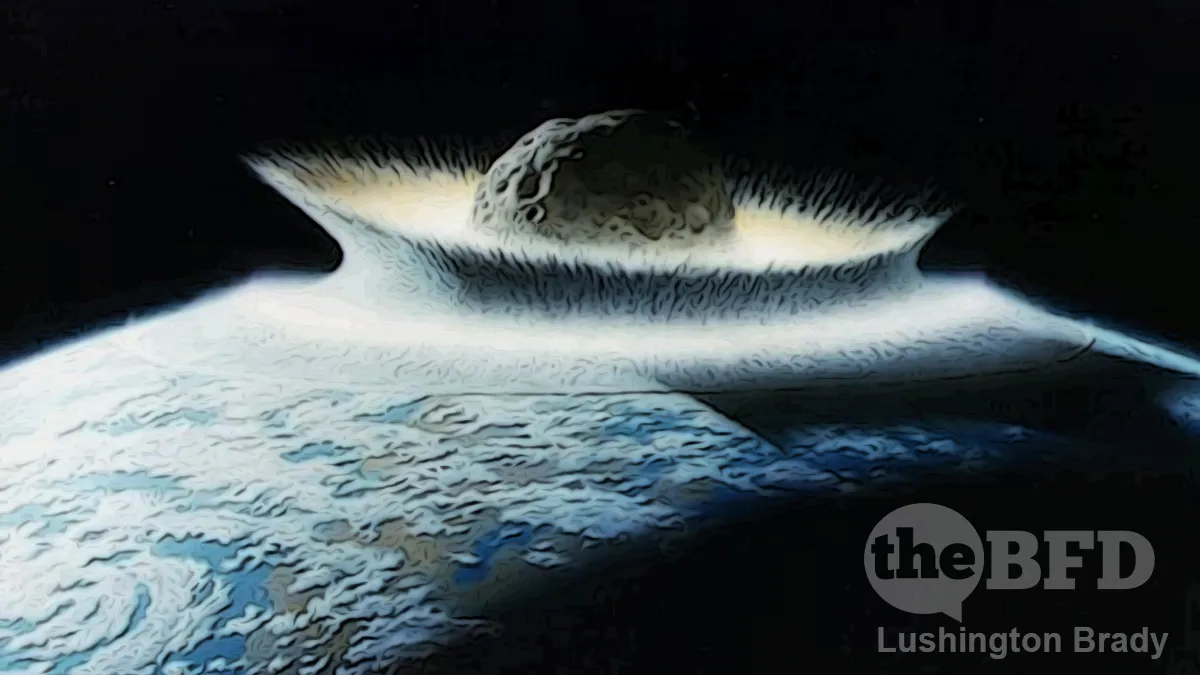Ever since it was discovered in the late ’70s, the Chicxulub crater – or more specifically, the impact that made it – has been a source of endless scientific fascination.
After all, it wasn’t just almost-certainly the great dinosaur killer: the sheer scale of the impact defies imagination. The impact is estimated to be in the region of a 100 million megaton blast (the biggest bomb ever detonated was ‘just’ 50 megatons). Its blast wave sent a searing hurricane across the continental US – a recent study suggests a wall of fire that ripped thousands of miles in just minutes. There were also massive tsunami.
With its south-to-north trajectory, and half a world away, it might be thought that the tsunami might mostly have spared Australia and New Zealand.
But maybe not.
A new study uses computer simulations to suggest that a global mega-tsunami ricocheted around the world, eventually crashing up on antipodean beaches in the hours and days after the impact.
“The first 10 minutes were just crazy,” said co-author Brian Arbic, an oceanographer at the University of Michigan.
“Within seconds, stuff is just blown miles high and the Earth is depressed by many miles and the whole ocean is thrown up into the air.”
What goes up, as we know, must come down.
Planetary scientist Brandon Johnson of Purdue University found that after the big splash, the material that fell back to Earth caused waves several kilometres high.
While the Gulf of Mexico and what is now the continental United States suffered the worst, within the next two days most of the world’s coastlines felt the effects of the impact.
Some parts of the world were shielded from the tsunami, which sped across the deep ocean like a jetliner, but others like Australia and New Zealand were not.
The tsunamis would have been carried some 30,000 times more energy than the 2004 Boxing Day tsunami.
A tsunami expert on the team, Vasily Titov of the National Oceanic and Atmospheric Administration, said the simulation suggested the impact could have been “pretty brutal” for Australia.
It showed waves of about 20 metres would have hit the east coast within 24 hours after the tsunami was triggered, Dr Titov said.
And while the exact level of inundation of coastlines has yet to be modelled, he estimated areas up to 40 metres above sea level would have been deluged.
This is the maximum inundation seen right at the source of the 2004 Boxing Day tsunami, he added, and is twice the inundation level experienced in Japan by the 2011 tsunami.
There’s good reason to be healthily sceptical of research that relies wholly on computer modelling. But in this case, there’s physical evidence to back up the modelling – namely, ancient sediment samples collected from ocean drilling projects all around the world.
“This tsunami was strong enough to disturb and erode sediments in ocean basins halfway around the globe, leaving either a gap in the sedimentary records or a jumble of older sediments,” lead author Molly Range, a paleoceanography masters student at the University of Michigan, said in a statement.
“[Such disturbances] are consistent with our model results, which gives us more confidence in the model predictions.”
The evidence of ocean sediment disturbances shows a significant impact in New Zealand.
Christopher Hollis, study co-author and geologist from Victoria University, said there was evidence in New Zealand of a “chaotic mass” of rock and mud that appeared on top of smooth ocean sediments from the time.
Until now, these were believed to have been caused by a submarine mudslide or some other local event.
Dr Hollis said the evidence from the model now suggested they were caused by “backwash” from the mega-tsunami triggered 12,000 kilometres away.
“The tsunami is thought to have ripped up chunks of sea floor.”
ABC Australia
All in all, it appears that few places on Earth had a good day 65 million years ago.









